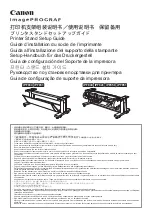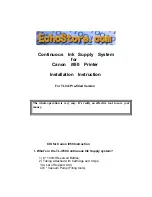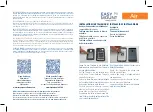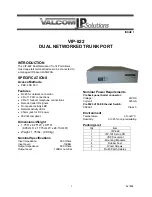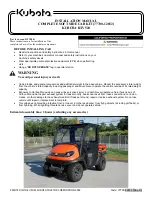
IRS31Pro-UMB
Operating Manual V10 / 01.2020
G. Lufft Mess- und Regeltechnik GmbH
14
7 Installation
The road sensor must be installed in the centre of the road lane. On two lane carriageways installation
takes place in the left-hand lane.
7.1
Preparation
A drill hole of diameter > 16 cm and depth 6 cm is required for inserting the sensor. For the connection
cable, a slot of width 2 cm and depth 5 cm is cut into the road surface.
Attention! Be careful not to damage the insulation layer when working on bridges. (In this case it
is not always possible to maintain a depth of 6 cm.)
For temperature sensor 1 (optional), a slot is required at an angle of approximately 68º in relation
to the connection cable slot. The slot is cut into the road with a width of 2 cm, depth of 5 cm and
length of 35 cm.
For temperature sensor 2 (optional), a drill hole is required with a depth of 30 cm and a diameter of 2 cm.
In relation to the connection cable slot, this must be positioned at an angle of approximately -68º,
approximately 20 cm from the outer rim of the road sensor drill hole (see Figures 2 and 3). A slot of width
2 cm must be cut between the two drill holes.
If necessary, the slot lengths must be adjusted in accordance with the installation conditions at the site.
For sensors with only one temperature sensor, temperature sensor 2 is omitted. In this case, temperature
sensor 1 can also be installed at a depth of 30 cm (see installation instructions for temperature sensor 2).
The external temperature sensors are protected to IP67. Constant use under water must be avoided.
One of the external temperature sensors is marked with a red cable flag, on which the intended
installation depth is given. If the sensor is not installed in the designated depth, the channel assignment
must be changed in the sensor configuration. See chapter 10.2.4 Device Settings.
7.2
Installation
Warning: The cable connections must not be opened under any circumstances!
Shortening the supply cable is only permitted at the cabinet end of the cable. The supply cable must be
placed in a protective tube that prevents any expansion of the road surface from being transmitted to the
cable. Be careful not to expose the cables of the road sensor to tensile stress during the installation.
Warning: Damage to the sheathing of the supply cable or external sensors will lead to the ingress
of water into the sensor! Sensors with damaged cables must not be installed and can only be
repaired by Lufft.
Insert the road sensor into the designated drill hole in such a way that it is flush with the road surface. In
order to achieve this, place the installation aid - which is already mounted on delivery - on the surface of
the road. If necessary, adjust the sensor position by bending the installation aid.
Under no circumstances must the road sensor project beyond the surface of the road (possible
damage due to snow-clearing vehicles!).
Fill the cavities with casting resin concrete.
Only such concrete casting systems may be used in which the temperature during the curing process
remains below 80°C (176ºF), as otherwise the road sensor will be damaged. After the concrete has
hardened, remove the installation aid and the green protective foil. Re-insert the fixing screws of the
installation aid into the open holes of the sensor. All 6 fastening screws of the cover are then tightened
with a torque of 2 Nm.






























